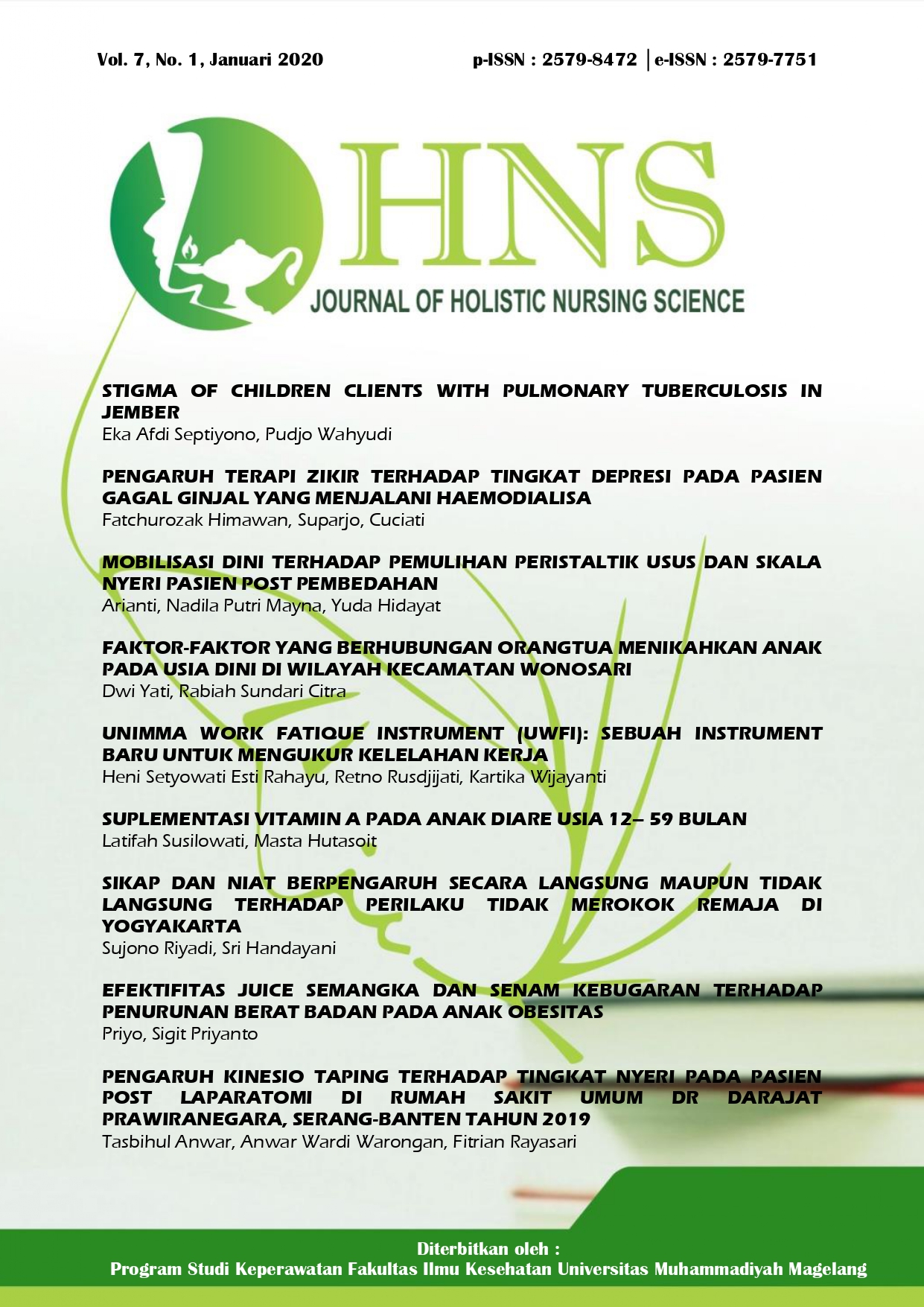STIGMA OF CHILDREN CLIENTS WITH PULMONARY TUBERCULOSIS IN JEMBER
Main Article Content
Abstract
Tuberculosis is a disease that is contagious and can make stigma. The stigma gained by Tuberculosis clients is curse disease and poor people disease. This study aims to identify feelings that are felt and experienced by child Tuberculosis clients so that appropriate interventions can be carried out. Qualitative research methods were chosen because this study tried to explore the stigma and discrimination of child clients with Tuberculosis in Jember. Participants in this study were 5 participants. The results showed that the stigma and discrimination of child Tuberculosis clients in Jember that the response when diagnosed was sad because of being exposed to an infectious disease, the label of discrimination came from siblings, neighbors, and schools. The form of discrimination that occurs is knowing the closest person, the separation of places to eat, and seating in school. The perceived way of stigma is curse disease and infectious diseases. The cause of stigma is because people around feel afraid, the impact felt by participants is often alone, sad, angry, and sometimes crying. An effort needs to be made to prevent or minimize the stigma of Tuberculosis clients. Screening can be done as a way to identify the presence/absence of self-stigma in newly diagnosed and those who have undergone treatment.
Downloads
Article Details

This work is licensed under a Creative Commons Attribution 4.0 International License.
Authors who publish their articles in JHNS retain full copyright of their work. JHNS does not require authors to transfer their copyright to the journal or Universitas Muhammadiyah Magelang as the publisher. The authors grant JHNS a license for the first publication.
